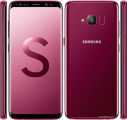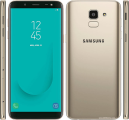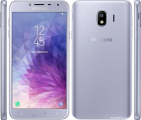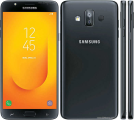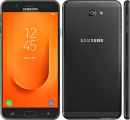
Samsung Galaxy S8 Plus 64 GB Prices
Important Note.
- All prices are in Pakistani Rupee (PKR)
- Prices may vary at stores and our effort will be to provide you with the updated prices.
- The latest price of Samsung Galaxy S8 Plus 64 GB was obtained on 17 مئی, 2019. The prices at the original stores had been updated on the respective mentioned dates.
- Find out WhatMobile price has dropped in Pakistan by selecting Notify Price Drop button
- Find out WhatMobile has better specifications by clicking Add To Compare Button find out what Mobile has better reviews by visiting our reviews section
- Find out WhatMobile is cheaper on which retailer by clicking Compare prices from retailers button
Search Terms
- Samsung Galaxy S8 Plus 64 GB
Specifications
| GENERAL | |
| 2G Network | GSM 850 / 900 / 1800 / 1900 - SIM 1 & SIM 2 (dual-SIM model only) |
|---|---|
| 3G Network | HSDPA 850 / 900 / 1700(AWS) / 1900 / 2100 |
| 4G Network | LTE band 1(2100), 2(1900), 3(1800), 4(1700/2100), 5(850), 7(2600), 8(900), 17(700), 20(800), 28(700) |
| Sim | Single SIM (Nano-SIM) or Hybrid Dual SIM (Nano-SIM, dual stand-by) - Samsung Pay (Visa, MasterCard certified) - IP68 certified - dust/water proof over 1.5 meter and 30 minutes |
| Announced | 09/03/2017 |
| Status | Available. Released 2017, April |
| BODY | |
| Dimensions | 159.5 x 73.4 x 8.1 mm (6.28 x 2.89 x 0.32 in) |
| Weight | 173 g (6.10 oz) |
| DISPLAY | |
| Display Size | 6.2 inches |
| Resolution | 1440 x 2560 pixels (~474 ppi pixel density) |
| MultiTouch | Yes |
| Protection | Corning Gorilla Glass 5 - 3D Touch (home button only) - Always-on display |
| SOUND | |
| AlertTypes | Vibration; MP3, WAV ringtones |
| LoudSpeaker | Yes |
| 3.5mm jack | Yes - 32-bit/384kHz audio - Active noise cancellation with dedicated mic |
| MEMORY | |
| CardSlot | microSD, up to 256 GB (dedicated slot) - single-SIM model microSD, up to 256 GB (uses SIM 2 slot) - dual-SIM model |
| Internal | 64 GB, 4 GB RAM |
| DATA | |
| GPRS | Yes |
| EDGE | Yes |
| Speed | HSPA 42.2/5.76 Mbps, LTE-A (4CA) Cat16 1024/150 Mbps |
| WLAN | Wi-Fi 802.11 a/b/g/n/ac, dual-band, Wi-Fi Direct, hotspot |
| Blue Tooth | 5.0, A2DP, LE, aptX |
| NFC | Yes |
| USB | v3.1, Type-C 1.0 reversible connector |
| CAMERA | |
| Camera Primary | Dual 12 MP, phase detection autofocus, OIS, dual-LED (dual tone) flash |
| Camera Features | Geo-tagging, simultaneous 4K video and 9MP image recording, touch focus, face/smile detection, Auto HDR, panorama |
| CameraVideo | 2160p@60fps, 1080p@120fps, HDR, dual-video rec. |
| CameraSecondary | 8 MP |
| FEATURES | |
| Processor Cores | Octa-Core |
| OS | Android OS, v7.0 |
| CPU | Octa-core (4x2.3 GHz & 4x1.7 GHz) - EMEA Octa-core (4x2.35 GHz Kryo & 4x1.9 GHz Kryo) - USA & China |
| Sensors | Iris scanner, fingerprint (rear-mounted), accelerometer, gyro, proximity, compass, barometer, heart rate, SpO2 |
| Messaging | SMS(threaded view), MMS, Email, Push Mail, IM |
| Browser | HTML5 |
| Radio | No |
| GPS | Yes, with A-GPS, GLONASS, BDS, GALILEO |
| Java | No |
| Colors | Midnight Black, Orchid Gray, Arctic Silver, Coral Blue, Maple Gold, Rose Pink |
| Others | - Samsung Desktop Experience support - Fast battery charging - Qi/PMA wireless charging (market dependent) - ANT+ support - S-Voice natural language commands and dictation - MP4/DivX/XviD/H.265 player - MP3/WAV/eAAC+/FLAC player - Photo/video editor - Document editor |
| BATTERY | |
| Battery | Non-removable Li-Ion 3500 mAh battery |
| MISC | |
| SARUS | 0.67 W/kg (head) 0.97 W/kg (body) |
| SAREU | 0.27 W/kg (head) 1.00 W/kg (body) |
Reviews
21/04/2017 - 2:22pm
It's time folks. We're in the process of taking the Galaxy S8+ for a spin and are now ready to issue part one of our review telling you all about what this phone is like. In part one, we'll be going over the exterior design and build quality, as well as the Super AMOLED curved edge display.
So without further ado, let's crack on...
Samsung Galaxy S8+ Review: Design & Build
Good or bad smartphone visual design is, of course, subjective, and it’s fairly safe to say that anyone who’s been unimpressed by Samsung’s aesthetic to date is probably not going to be swayed by the Galaxy S8+. Likewise, fans of the firm’s prior devices will be just as happy with the latest edition as they were with what came before.
The main thing is that the Galaxy S8 series has only become curvier and more streamlined than its already notably curved predecessors; the corners are completely smoothed and rounded, while the curvature of the edge display follows a continuous line from front to back where it meets a perfectly symmetrical rear panel, with only a thin sliver of bodywork separating the two. The top and bottom edges are also curved but it’s not as pronounced and doesn’t curve the display itself along these edges.
Holding the phone it’s very apparent that you’re gripping what virtually amounts to a solid piece of curved glass - yes there’s a metal frame holding it together, but it’s barely noticeable.
This actually presents the first stumbling block for the Galaxy S8+; in my time with the device I never felt entirely safe holding onto it; it’s slippery as anything and the edges are so wafer thin coupled with the curved slippery glass surface. Samsung allegedly tweaked the edge curvature to improve grip but I don’t really feel this has been successful and I’d strongly recommend some kind of case to improve grip and prevent drops.
That particular gripe aside, the Galaxy S8+ feels incredibly solid in terms of its construction; there is zero wobble or flex in the frame or component panels, and it’s got a nice bit of heft to it without being heavy. You’ve also got the reassurance that it’s an IP-rated water resistant handset, so there’s no fear in taking it near the wet stuff.
Aesthetically I rather enjoy the Galaxy S8+ design, it’s still got that quasi-industrial style that is so popular just lately with the punched speaker grille and emphasis on metal and glass, but the added curviness does lend it a certain unique style that is very futuristic and elegant.
Our review unit is the black coloured model, which Samsung has made entirely black; the glass, the metal surround, the fittings and furniture. Everything is black. This again gives it a very sci-fi, 2001: A Space Odyssey obelisk-like appearance.
It’s a “stealth” phone, the kind of thing Batman might design. However, the shiny glossy glass does also show up fingerprints a fair bit, particularly on this black model. It won't stay pristine for very long.
Of course you can get other colour options which are not quite so extreme and feature metallic trim that’s a bit more visible. Here the detail of the visual design is a bit more apparent.
Samsung Galaxy S8+ Review: Display
Samsung has been playing the long game as far as display technology is concerned. It started investing heavily in OLED while everyone else was saying it was too complicated or expensive, even though many could see it would outclass LCD if done properly. The firm also started developing flexible OLED way ahead of everyone else and is now starting to reap the benefits of that as a market leader. Rivals such as Apple are now looking to source flexible OLED from Samsung's factories.
Samsung’s history with OLED hasn’t always been smooth, there have been some tough learning experiences - early on the firm’s screens came under flak for some instances of poor colour calibration and pixelation due to earlier PenTile technology.
But it persevered, and is now the undisputed ruler of the OLED market, which also virtually puts it in position as the dominant force in the display market too - OLED is now widely recognised as superior to LCD, so much so that Apple and many others are jumping on the bandwagon.
For anyone who has seen the Galaxy S7 EDGE or the Galaxy S6 EDGE in person, the display of the Galaxy S8+ will be familiar territory. It curves around the edges of the handset just like before, and it has an Always On function so that even when in sleep mode it’ll show the time, date, and some notifications while barely consuming any power at all.
However, as the bodywork has expanded on this model, the display size and ratio has also increased. The display is now a 6.2in Super AMOLED - nearly as big as the Galaxy Note - but the screen pushes out to much more of the front fascia, indeed, the phone’s front is virtually all screen with an 84% screen-to-body ratio and an 18:9 aspect ratio. As the screen and aspect ratio has expanded, the resolution has increased accordingly to 1440 x 2960 WQHD+ (3K) at 529 pixels-per-inch (ppi).
The image quality is what we’ve come to expect as typical for a Samsung flagship. In a word; superb.
It’s incredibly sharp with no pixelation or blurring to be found. Text in particular is very crisp. It also features a full 100% DCI-P3 colour gamut, the very same one used on 4K TV sets and certified by the UHD Alliance for Mobile HDR Premium. In short, if content has been produced for 4K UHD Premium TVs, it’ll look as good on the Galaxy S8+.
A new high saturation “Deep Red” OLED display technology Samsung has implemented here means the Native Colour gamut has a wider range too, well over 100% coverage for both DCI-P3 and sRGB. This, together with the excellent brightness levels (as much as 20% brighter than the Galaxy S7 and peak brightness over 1,000 nits) makes outdoor use in bright sunlight a breeze.
All of the previous standout features from Samsung’s Galaxy S7 display have returned, including the excellent adaptive brightness and contrast, user-adjustable colour profiles, performance and power saving modes, and the acclaimed personalised auto brightness control feature.
The customisable EDGE display features, which allow you to configure quick access shortcuts along the curved screen edges, has also been expanded. It’s quicker and easier to set up, and you can add applications, contacts, and a selection of smart editing tools, all on three customisable and swipe-able panels; it’s a bit like having a whole separate selection of homescreens hidden in the display edge.
From using the phone I can certainly say the colour is rich and vibrant, in Samsung’s typical style. Contrast is also fantastic with inky deep blacks and viewing angles are insanely wide.
The long and the short of it is this is a gorgeous display with fantastic visual quality and smooth touch input. I can’t really imagine anyone getting tired of ogling or prodding this screen after any length of time, and it’s highly tailorable to your needs as the viewer. You really can have it your way by tweaking the settings however you please.
We should note that some users in Korea have complained that the Galaxy S8 has a red hue to the display and tweaking the display colour settings doesn’t seem to fix it. Samsung’s official response so far is to issue the following statement:
“It is not a quality problem and it can be adjusted with the phone itself. If the color still appears to be reddish, customers can change it at the service center.”
It’s our understanding that this isn’t a problem on every unit, but it is something we’ll be keeping an eye on and will update you with as more info emerges.
Update:
According to The Korea Herald, Samsung has now acknowledged the red-tint display problem and is working on a fix, the firm issued a statement as follows:
"Because there are some complaints about the red-tinted screens, we decided to upgrade the software next week for all Galaxy S8 clients."
Samsung also issued instructions to its Service Centres regarding the issue, saying, "There will be an additional update to make color revisions more minutely at the end of April"
Samsung Galaxy S8+ Review: Battery Life
Long battery life is pretty much the Holy Grail for many smartphone users these days. There are plenty of flagship-grade smartphones which offer relatively good battery life, and a few which offer excellent battery life. It’s not too rare now to find devices such as Samsung’s Galaxy Note series, the Huawei Mate 8 and 9, the bigger iPhone Plus models, and Google’s Pixel XL which will still see you sitting comfortably at somewhere around the 70%-76% range for the battery charge after watching a two hour movie on full brightness.
This sort of usage tends to translate into being able to watch films pretty much for eight hours straight on a single charge. Likewise, you tend to end up with a phone that’ll last days, or even a good chunk of a week if largely left idling, ticking away between 7%-10% per day.
But this will probably last a day and a half at most if you’re like most of us and are often giving it a poke for some reason or another throughout your typical day. You can bring that down further again if we’re talking a lot of intensive stuff like gaming.
So where does the Galaxy S8+ fit into this? Well for the two hour movie test using Mad Max: Fury Road, on full brightness, with the film downloaded to storage, and Wi-Fi and other connectivity switched off, it went from 100% charge to, get this, 86%. Yes you read that right, a two hour film on full brightness only cost 14% of the battery charge.
This is madness. I kid you not I have never seen anything quite like this in my time of reviewing smartphones. I reckon upwards of 10 hours of movie playback is not at all unrealistic here. You can easily expect a couple of days of normal smartphone use on a single charge, in some cases perhaps three, and if you leave this phone alone save for a few calls or the occasional email, web browsing session or message, it will last you a good three or four days, possibly more.
In short, the Galaxy S8+ has the best battery of any smartphone I have ever tested. It just keeps going. I've pretty much only had to charge it a couple of times since I got hold of it.
Granted, I am sure you will still be able to burn through it in a day if you really push things, but let’s be real here, no smartphone will survive on a single charge if you insist on playing Super Mario Run or Star Wars Lego from dawn until dusk, only taking breaks to watch YouTube in between.
But for most standard users this is a dream come true. This is a phone you can rely on to be alive and kicking from when you leave the house in the morning right through to the next day, and you don't have to be too careful with it to achieve this, as long as you don't rinse it like crazy. At the very least this kind of battery usage makes it easier to plan around. I have not been caught short by the Galaxy S8+ leaving me high and dry unexpectedly as so many other phones are liable to do.
Samsung Galaxy S8+ Review: Camera
The much-rumoured dual-lens camera for the Galaxy S8+ hasn't come to pass, sadly, which did leave me wondering how much attention the phone's imaging capabilities would receive.
To be clear, however, Samsung camera hardware has impressed me for some time now; the last handful of flagships have always sported very capable cameras which, for me, had the perfect combination of "right stuff".
What do I mean by this? Well for one thing Samsung stopped chasing the megapixel rating, instead opting to increase the pixel size, and crucially go for better apertures. It started off with wide f/2.0 but has gradually improved this to where we now stand with an f/1.7 aperture on a 12MP sensor - nice and open, letting in lots of light and detail.
But this alone isn't enough to ensure good quality photography. Several iterations of Samsung's hardware have been plenty capable, but with the last generation it introduced what was, at the time, a unique feature; dual-pixel phase detection autofocus.
The Samsung Galaxy S8+, like its predecessor, is still one of only a few handsets to use this technology, and it really makes a difference in terms of focusing speed and capture speed. This means the image is captured very quickly after focusing (also very quickly), so that the wide aperture doesn't let in too much light and cause blurring, overexposure, and other undesirable consequences. In other words, the Galaxy S8+ is fine tuned down to fractions of a second so that it's optimised to take a photo in the best way possible.
Together with Samsung's wonderfully simple and user-friendly camera UI, this also means it's very easy to use by all comers, not just photography buffs - another pillar of what I'd consider the "right stuff" for a mass-marketed flagship. It really is easy to just point, click, shoot, and capture amazing quality photos in next to no time.
Naturally, there is also the now the required "Pro" mode for experts to fine tune things like exposure, ISO, focus, and white balance, amongst many other settings.
So what's the result? Well as you can see the images speak for themselves. The colour is rich and vibrant in Samsung's typical style, but the detail, sharpness, and dynamic range are all fantastic. The handset particularly excels at close-in shots and there's no need to tweak the settings to Macro mode in order to achieve this; standard Auto mode will do it just fine with a quick tap-to-focus on the subject before hitting the shutter button. I'm pretty blown away by how crisp everything is.
The Auto features also seem to be very intelligent in adjusting for different lighting conditions; plenty of snaps in less-than-ideal light, which on any other phone might come out a bit dull or far too over-exposed, seemed to adjust and get things just right to make a fantastic, crisp photo with excellent range and colours which pop.
This also means the phone excels in low-light and night-time shooting. The sunset shots below show this in an outdoor scenario, but the photo of the wine bottles was taken indoors, in the evening, in a hallway with no windows; I was to all intents and purposes, in the dark while taking it. What's more, even with the flash on Auto, the phone didn't bother to use it, and it obviously knew it didn't need to - despite all this the photo looks like a perfectly normal daytime shot in a reasonably well-lit room.
In truth, I am not sure I've seen a phone that handles low-light and night-time shooting this well before. It's much, much better than the Huawei Mate 9's dual-camera which I've been using on my holiday, and which was rather disappointing in low-light.
The front camera - the first in the world to feature autofocus - is plenty capable too, and also excels at close-ups. Check out the lion statue below which was taken on the 8MP front snapper, which also features the same f/1.7 aperture as its rear-mounted sibling. Naturally things aren't quite as sharp as the main sensor, but they're still damn impressive and should offer you some of the most detailed selfies available. Maybe too detailed, as you won't be able to hide any blemishes quite so easily without heavy use of filters and post-processing!
Overall I'm tremendously impressed with the Galaxy S8+ camera. I wasn't expecting big changes from Samsung with the dual-camera being axed, and in truth, it has not changed the setup extensively from its predecessor. However, what small tweaks that have been performed have been very careful and precise, and they've made a huge difference to the overall quality and shooting experience.
Top marks here.
Check back for part four where we'll look at hardware and performance!
Write Your Own Review
My Recent Reviews
- Be first to post review for this product.
comments powered by Disqus




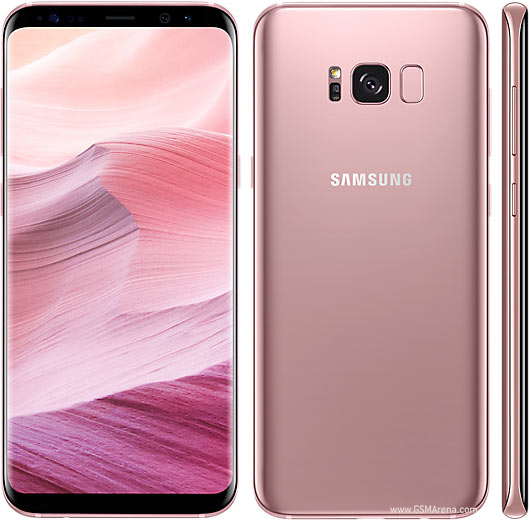
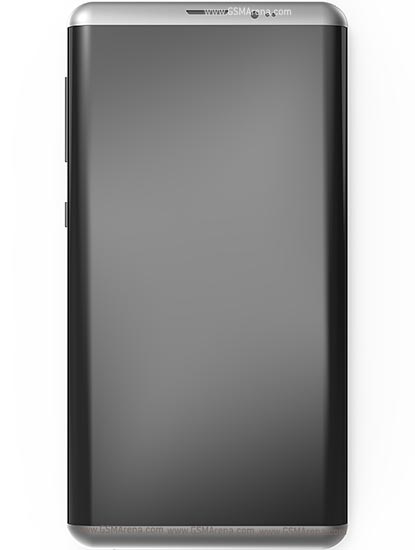












-32-GB.jpg)
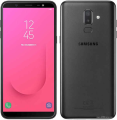
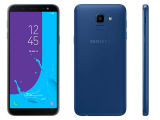
.jpg)
